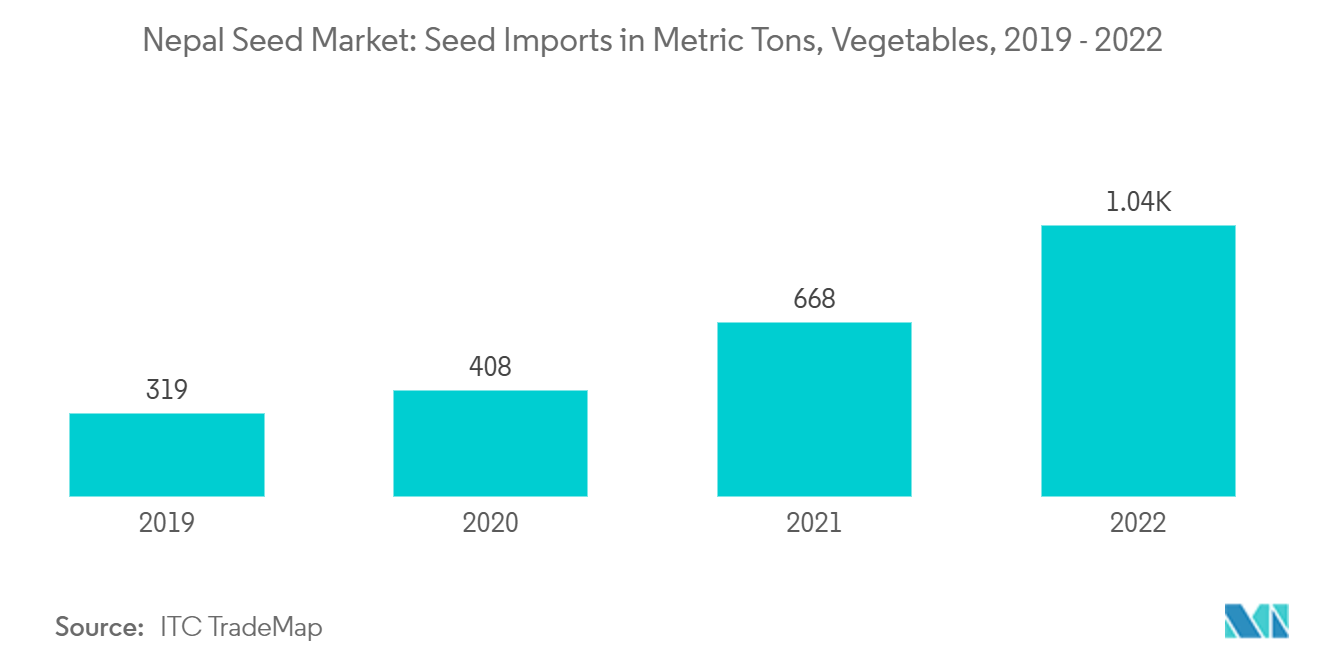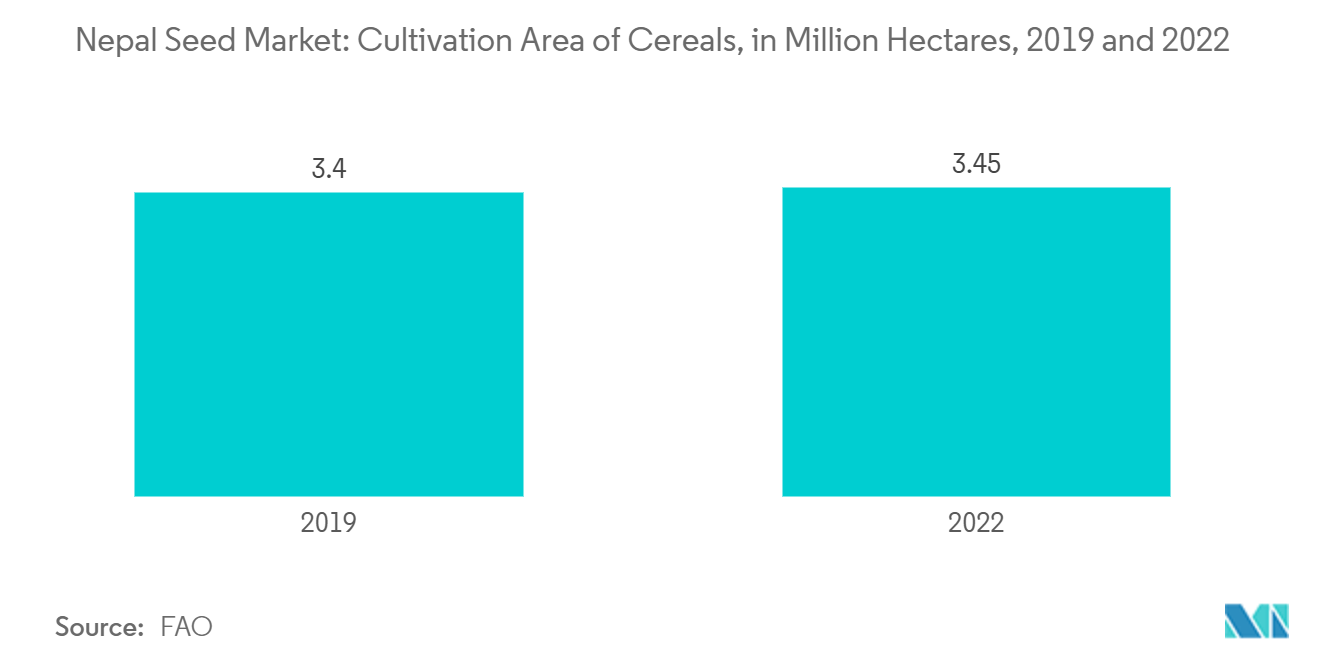Market Trends of Nepal Seed Sector Analysis
Increase in Adoption of Hybrid Seeds
- The Nepalese seed market is experiencing increased adoption of hybrid seeds, driven by factors such as growing food security demands, changing climate conditions, and the need for higher crop yields. Hybrid seeds offer advantages including increased productivity, disease resistance, and improved quality. The country imports about 73% of vegetable seeds and over 60% of hybrid maize and rice seeds annually, primarily from India, China, Italy, and other countries.
- Hybrid varieties are gaining popularity among both commercial and small-scale farmers due to their desirable characteristics. The use of hybrid varieties in major vegetable crops such as cabbage, tomato, cauliflower, cucurbits, onion, and carrots is expanding annually, even in small farms of Nepal. An estimated 73% of vegetable production area in Nepal is covered by hybrid varieties. This trend is driving overall vegetable seed imports, with Nepal's vegetable seed imports increasing from 318 metric tons in 2019 to 1,038 metric tons in 2022.
- Nepal has implemented a ten-year Agriculture Development Strategy (ADS) and National Seed Vision (NSV) 2025. These initiatives emphasize various aspects of research and seed production to achieve self-sufficiency, explore market opportunities, and improve the country's economy. These efforts are projected to drive hybrid seed production during the forecast period.
- Nepal's adoption of hybrid seeds faces challenges like high costs, lack of awareness, and inadequate infrastructure. Addressing these issues requires government and private sector collaboration to promote quality seed use, support farmers financially, and invest in agricultural research. However, the government intiatives to enhance seed development and ability of hybrid seeds to increase the yield are the factors anticipated to drive the hybrid seed adoption during forecast period.

Growing Cultivation Areas Boost Seed Demand
- The agricultural sector is vital to Nepal's economy, with seeds being a crucial input for crop production. The expanding cultivation area in Nepal is a key driver for the seed market, directly correlating with the demand for high-quality seeds.
- According to the Food and Agriculture Organization, Nepal's total cultivated area has been steadily increasing. The total harvested area in the country grew from 4.4 million hectares in 2019 to 4.5 million hectares in 2022, representing an increase of about 1.6% during this period. This expansion of cultivated land is primarily driven by population growth, improved agricultural practices, and government initiatives promoting agricultural development.
- Cereals are the major crops grown in the country, with their cultivation area accounting for about 76.2% of the total cultivation area as of 2022. This extensive cultivation of cereals is projected to drive demand for cereal crop seeds during the forecast period.
- The increase in cultivation area has led to a surge in demand for seeds, particularly high-yielding and disease-resistant varieties. This has created opportunities for seed producers and distributors to meet the growing needs of farmers. Consequently, Nepal's seed market has expanded significantly in recent years, attracting an increasing number of domestic and international companies.


